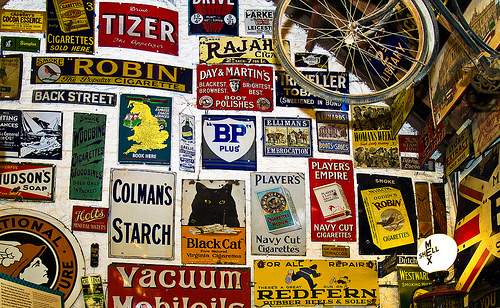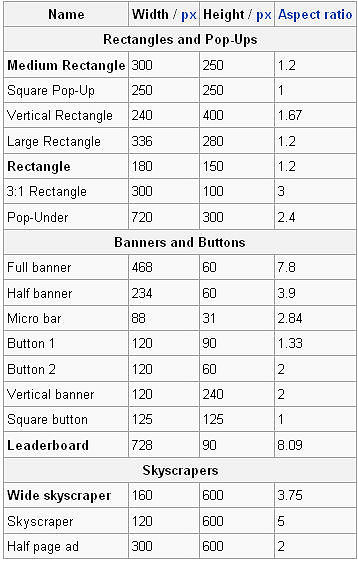The idea of monetizing a website appeals to most web builders, bloggers, and business owners. From conception to launch plans are made on how to profit from the hard work and valuable content placed upon the pages. However many make the fatal mistake of over-advertising on their site.
This is one of the common causes for websites to go under. The risk of over-advertising is much greater than the benefits of multiple affiliate links and banners.
Here are a few reasons why you should consider moderate advertising.
It’s all about the fans:
There is a reason you are prepared to monetize your site. You have noticed the increase in traffic and an ever growing fan base. Littering your page with flashing ads from various and irrelevant affiliates will only drive away traffic rather than keeping them on your site.
Choosing your advertising carefully will allow you to hand tailor your affiliates for the traffic and niche that made your site popular. Sometimes less is more and this goes for advertising as well. Keeping moderate and well placed ads can help keep your visitors interested in your sites content while still offering the products or services you want.
Loading Issues:
If you litter your page with ads, you may actually stop your page from being seen. Though technology has increased and the newer computers can handle a lot of information at one time, some of your followers may be on a slower computer. Too many ads or large flash ads can cause your page to load improperly or not at all. When you have so much time and effort invested in designing your page, you want it to be seen.
Loss of Identity:
There are millions of websites covering a wide range of niches. If you create a website that covers a unique niche or even a current niche with a new twist, you may have something that is innovative. However, if you overload your page with ads, will people even know what your site is about?
I have seen websites that were so ad rich, that I honestly couldn’t see the subject of the website itself. Where there was placement for content, ads resided. This creates a site that is basically useless.
Losing Affiliates:
Google Adsense allows only three banners or links per page. Respectable affiliates will also have the same restrictions. Due to SEO guidelines, page ranks and search engine metrics, overly linking affiliates and advertisements, can do more damage than good. Search engines do not like sites that seem spammy or overflowing with ads. This in turn can bring down your page rank and even cause your affiliate accounts to close due to violating their terms of service.
Loss of Income:
The point of affiliate marketing and ad placement is to make a little money off your hard work. You spent hours, days or even weeks creating a website and want to get a little back for it. Properly placed ads on a site with good following can offer a bit of income. However too many ads that make people shy away from your site will cut that moderate income down to 0.
Some site owners believe the more ads, the more income. The real truth is, moderate ad usage and more followers, create more income. When you begin to see income from your ads, start marketing your site more. Creating a larger following with your already successful ad placement will show an increased income.
Lose Credibility:
If you have a plethora of advertisements that are not related to anything on your page that will also send up a red flag. Search engines check the relevancy of your links to the content on your site. The closer your links and advertising matches your niche, the better your site will do. Baby sites should offer baby products; hunting sites should offer camping gear, etc.
If your advertising doesn’t reflect your subject matter, you will find a loss in credibility. Those who once viewed your site as the go-to for information will shy away to avoid the blasting advertisements they have no interest in. It won’t take long before your competitor sees an increase of traffic as your customers flock to their more strategically and minimal ad contented site.
The Solution:
1) Proper Placement of Ads:
There are tried and true ways of placing advertisements on web pages. It doesn’t take a business degree to understand what the people want and what your customers or fans expect. Placing ads that compliment your site will yield better results and higher conversion rates than the large and loud “buy me” banners flashing in the center of your page.
Match your color scheme by blending, complimenting or contrasting the colors of your site. If your site has a light background, blending or complimenting colors are suggested. Contrasting colors are suggested for darker backgrounds.
2) Use appropriate Ad sizes:
Large banners and ads that take up half your page are not suggested. By taking away from the content on your page, your visitors will look elsewhere before weeding through the over sized advertisements. There are industry standard sizes for advertisements that are effective and will still keep the focus on your site.
Full banners should be no more than 468×60 with an aspect ratio of 7.8; vertical banners should be 120×240 with an aspect ratio of 2.
The only advertisement larger than those should be a leaderboard with a size of 728×90 and an aspect ratio of 8.09. Most affiliate marketers will supply banners of the correct size, making your placement easier. If you plan to create your own banners that better reflect the feel of your site, below is a chart of proper sizes.
When placing advertising, there are five basic and successful areas for placement. The first is the header. A properly sized banner at the header of the page will be the first thing a visitor sees as the page loads. These are the conditions one must consider when placing advertising. Below is an example of proper ad placement.
3) Plan your advertisements:
It doesn’t take a business degree (though it helps) to properly advertise on your site and increase conversion rates. Planning your advertisement should get the same consideration as the planning the site itself. Research the common placements, colors, and styles of ads that yield the best results and try them for yourself. Like anything else, effective advertising is trial and error.
Image Credit: Angus Kirk



8 comments
I agree that advertisements must be relevant to your site’s theme – this makes a smoother transition, and gives the illusion that the ads belong, or contribute to content.
Very important point you shared Mr. Jason Toney, you not only raised very important points, but also give strong solution of these problems. I am totally agreed with you that proper placement of ad is very important to attract not only viewers, but advertisers therefore in my opinion all webmasters should avoid a lot of ads on their sites because this thing can create hurdle to attract viewers and advertiser so in this way they can lose their site’s importance.
Thank for sharing,
Nice tips to keep away from these kind of mistakes. Often many bloggers will post their blog post for earn money via ads and somebody do it with right policy and on other side somebody don’t do it and after result of that they loss their credibility which will so embarrassing for them.
Selecting the advertising will allow you to get more traffic to the site and it will be popular at the end of the day. Thanks a lot for given up here 🙂
I see people marketing against their self all the time.
Anything in excess is not good. Its kind of annoying to browse a site which have so many ads plastered all over that it leaves us guessing where and which the actual content is.
@Kavya
Yes, you are right but you must deal also with the term “relevancy”. What is the use of your advertise (e.g. flower related) if you advertise to a porn site? Can you pretty calculate how many clicks or visitors from there if you put your site in a non-relevant site to advertise>?
I am agree, too many ads can kill your blog this is the reason I do not run after so many ads. And it decreases your earnings instead of increasing.